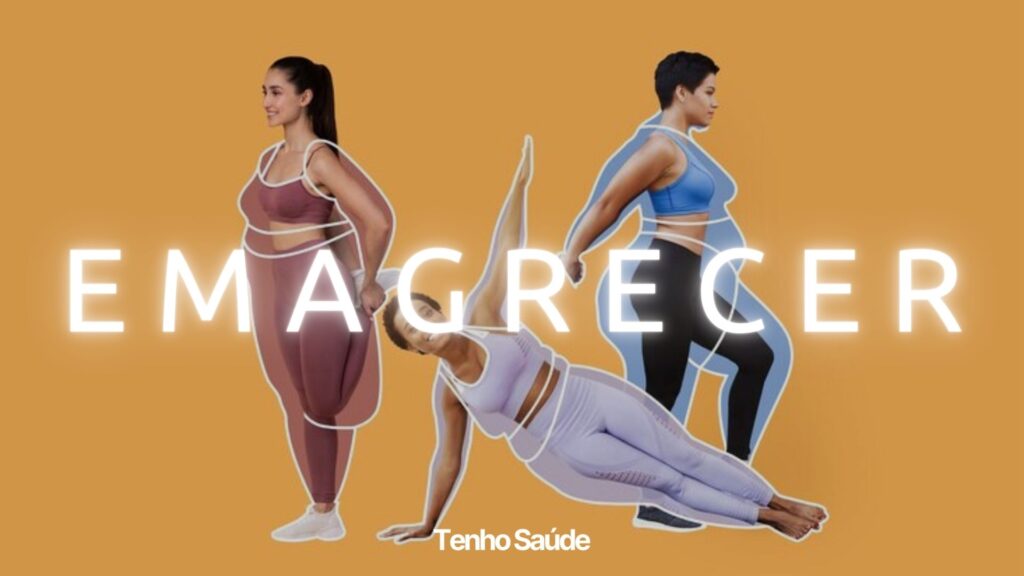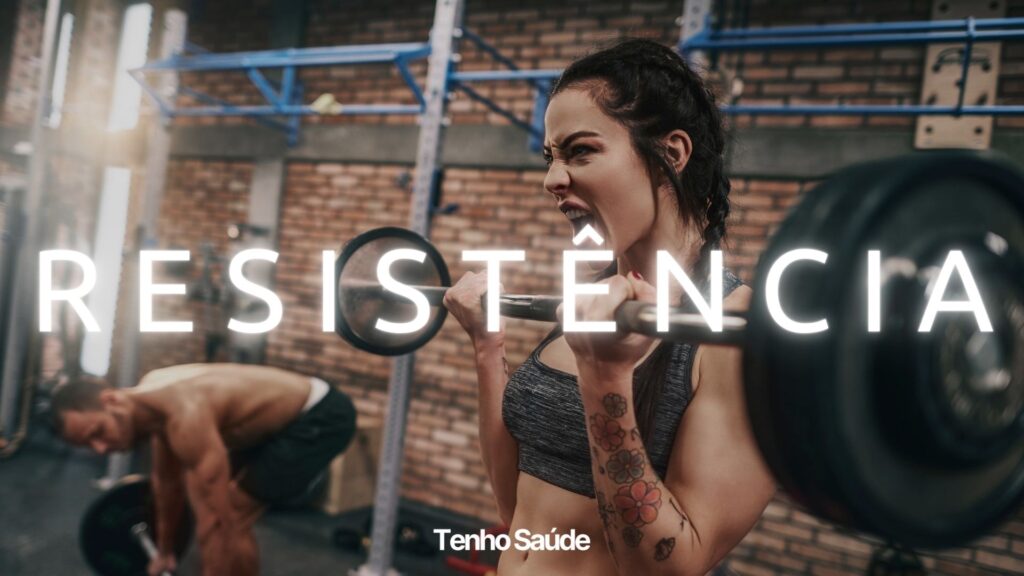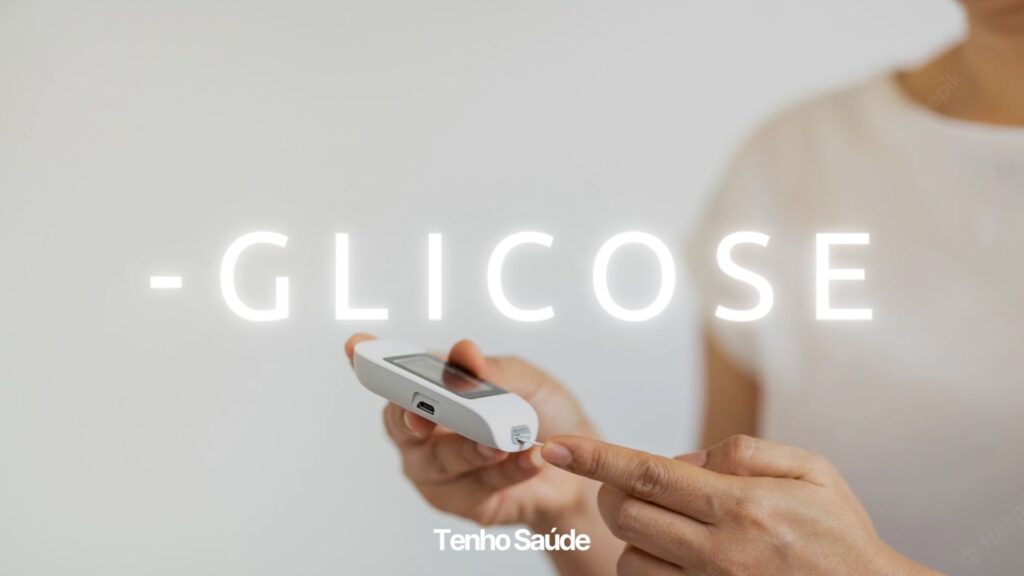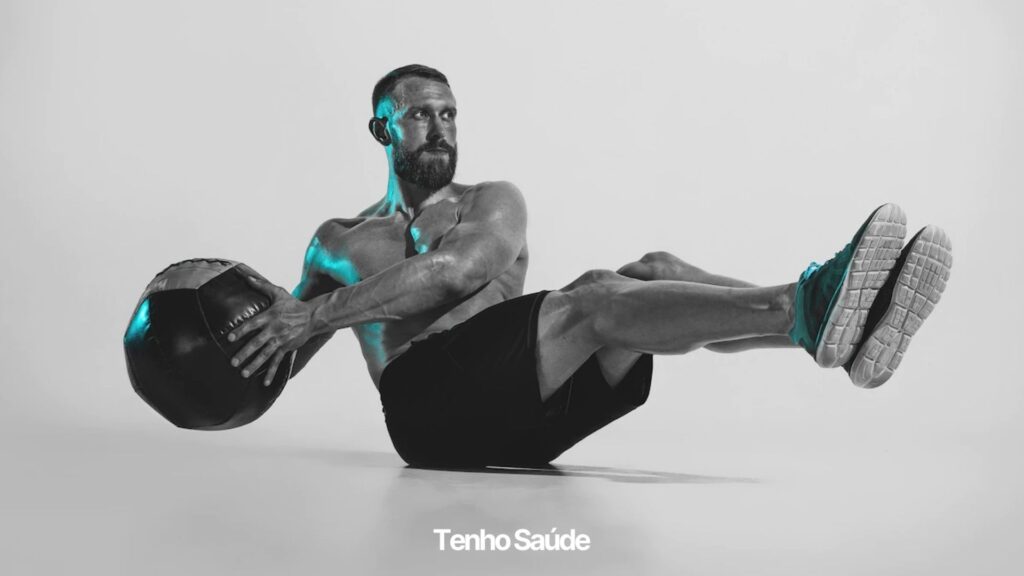HIIT what is it?
HIIT is short for High Intensity Interval Training, which means high intensity interval training, considered by experts to be the best exercise for losing weight.
HIIT makes you burn fat, gain muscle, increase metabolism and your body will continue to burn calories for hours. after you finish exercising, even when you are resting.
It is a training style that aims to achieve high intensity exercise with brief rest in a short period of time, keeping your body in a “state of fatigue”, exceeding the aerobic threshold.
Difference between HIIT and traditional training:

Training duration
30 minutes is all it takes to complete¹ a complete HIIT workout, achieving the same results as a long workout lasting several hours at the gym. 10 minutes of HIIT done well is equivalent to about 40 minutes of aerobic exercise.
State of fatigue (important)
Each person has an aerobic threshold, but to explain, we will use a threshold of 130 bpm (heartbeats per minute), if during exercise you reach above 131 bpm, you will enter fatigue mode.
What happens when you enter this state is that fat burning is optimized, greatly increasing resistance, physical conditioning and other benefits.
In traditional training You perform an exercise that can lead you to a short state of fatigue, about a few seconds, and in most exercises you won't even have enough heartbeats to enter that state.
In HIIT training You perform a sequence of high-intensity exercises in a short period with brief rest, which will raise your heart rate above the aerobic threshold, remaining in a state of fatigue for several minutes.
1 HIIT workout equals 2 types
In traditional training you will choose cardio (aerobic) or strength (weight training), HIIT is a mixed activity which combines aerobic and strength exercises.
HIIT benefits:
HIIT speeds up fat burning (for lean muscle)

We already know that cardio (aerobic) is effective for weight loss, burning body fat, but HIIT exercises are more intense and shorter, being faster and more effective than traditional cardio training.
This happens because the intensity of the exercise increases the rate of fat oxidation, as well as the increased oxygen consumption after performing the exercise, which occurs when you are recovering from the oxygen deprivation generated during the HIIT workout.
In this phase, fatty tissues are absorbed and converted into energy.
HIIT increases endurance and oxygenation absorption

During exercise, we can notice that in some cases, the body is fine and can continue to perform the exercise, but the heart is at its limit, this is a sign of low resistance.
HIIT expands the amount of oxygen the body can absorb per minute, this rate is known as VO2max.
This increase in the body will provide greater resistance and performance when performing exercises so that you can reach the point of fatigue during exercise, also providing an overall improvement in health.
VO2max is linked to the quality of telomeres, which make up the DNA system responsible for regulating the aging of our cells. Having healthy telomeres makes cells younger, reducing the risk of cancer and other diseases.
HIIT regulates binge eating (appetite)

Because it is an intense workout, HIIT will temporarily increase blood sugar and lactate levels, while decreasing ghrelin, a hormone responsible for regulating appetite, reducing the urge to eat (binge eating).
HIIT regulates glucose levels

A study² proves that HIIT rapidly increases glucose metabolism, as well as insulin sensitivity, promoting blood glucose regulation.
Anyone suffering from prediabetes or type 2 diabetes can benefit.
How to do HIIT training in practice?

It can be done in various formats such as: running on a treadmill or in the park, on a bike, stairs, jumping rope, dancing or even practicing HIIT at home, using your own body weight.
To explain in practice, we will use the treadmill: instead of running at the same speed for 40 minutes, in HIIT you will run for 20 seconds as fast as you can with great intensity and rest for 40 seconds.
You can repeat this series, also known as “sprinting” or “shooting”, 10 times, totaling 10 minutes of exercise that will be more effective than 40 minutes running at the same speed on the treadmill, saving a total of 30 minutes in this example.
The same result applies to any other activity. Consult a personal trainer for evaluation.
Precautions when doing HIIT:
Second³ to American College of Sports Medicine, people suffering from the following conditions should be observed during execution:
- Uncontrolled heart rate (arrhythmia);
- Uncontrolled diabetes;
- Retinopathy;
- Change in blood pressure;
- Recovering from injuries;
- Elderly;
A review4 concluded that HIIT is safe for different ages and medical conditions, but if you have any of the conditions mentioned, you can practice HIIT, but you should consult a personal trainer who will indicate the ideal intensity and time, analyzing your physical and medical condition.
Can I alternate exercise types in HIIT? Yes. You can choose to run and the next day jump rope, as long as you apply the intensity and intervals of HIIT.
Can you do HIIT every day? It is recommended to exercise 3 to 5 days a week, on alternate days, to allow your body to recover properly. Learn more about how many days to train per week.
How many days a week should I train? (best frequency)
- “Thompson WR. 2021 World Fitness Trends Survey, ACSM's Health & Fitness Journal. 1/2 2021. Volume 25; Issue 1: 10-19.”
- “High-intensity interval training rapidly improves glucose metabolism in diabetics: https://www.sciencedaily.com/releases/2017/04/170407103559.htm”
- “American College of Sports Medicine. ACSM Guidelines for Exercise Testing and Prescription. 11th Annual Philadelphia, PA: Wolters Kluwer, 2021.”
- “Martland R, Mondelli V, Gaughran F, Stubbs B. Can high-intensity interval training improve physical and mental health outcomes? https://www.tandfonline.com/doi/abs/10.1080/02640414.2019.1706829”







